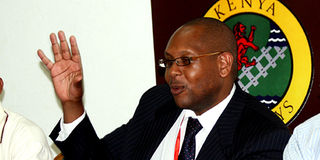Kenya Railways hunts for managing director

Former Kenya Railways Corporation Managing director Nduva Muli. PHOTO/ FILE
Kenya Railways Corporation plans to recruit a managing director to replace Mr Nduva Muli who was appointed principal secretary in the ministry of Transport.
According to an advertisement in the Daily Nation on Thursday, the potential managing director should have a minimum of 10 years as a senior manager in a large organisation.
The new MD will be expected to oversee the implementation of a new standard gauge railway. The government has already for funding with China for the construction of the new rail line between Mombasa and Kisumu.
Mobilise resources
The rail will carry freight trains at a speed of up to 80km an hour, and passenger trains at a speed of up to 120km per hour.
The advertisement said the successful candidate should have the ability to mobilise resources for project implementation and should engage stakeholders in order to successfully carry out the railway’s strategic plan.
The candidate should also be able to ensure the corporation’s assets and facilities are properly maintained, improved and re-developed to realise better returns, high level of operations, safety and efficiency.
The standard gauge railway, which the new MD will oversee, will be completed in five years.
It will cost $2.6 billion and the government has allocated Sh22 billion to kickstart the project.
The new MD will also oversee sale of the assets of the existing railway line to raise revenue.
The financing model for the project anticipates that once the standard gauge railway is completed, Kenya Railways will receive a salvage value of $41 million through disposal of the assets of the existing railway that include locomotive wagons, railway tracks and sleepers.




